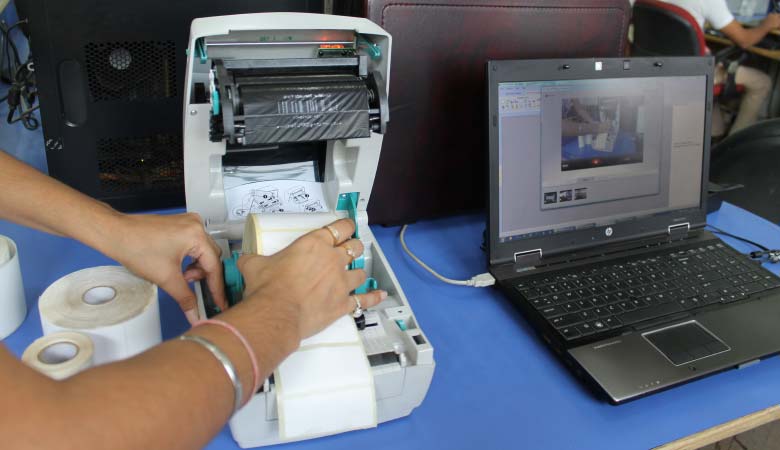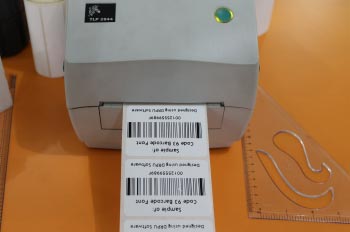Related Articles
Importance Of Barcode Printer
The level of support available for barcode printers can vary widely depending on the manufacturer and the specific model of the printer. It's important to research and choose a printer that offers the level of support that meets your needs, and to work with an authorized service provider if you require additional support or repairs.
Types of media used with a Barcode Printer
Barcode printers can print on a variety of media types, including:

- ❖ Labels:
These are the most common media used with barcode printers. Labels can be made from paper, synthetic materials like polypropylene or polyester, or even fabric. They come in a variety of sizes, shapes, and colors, and can be pre-printed with graphics or logos.
- ❖ Tags:
These are similar to labels, but are typically made from a thicker or more durable material like cardstock or vinyl. They can be used for a variety of applications such as inventory tracking, asset management, or shipping and receiving.
- ❖ Wristbands:
These are specialized media used for printing barcoded wristbands for events, hospitals, or other applications where identification is required.
- ❖ Receipts:
Barcode printers can also print on thermal receipt paper, which is commonly used for point-of-sale transactions.
- ❖ Cards:
Some barcode printers are capable of printing on plastic cards, which can be used for identification, access control, or loyalty programs.
- ❖ Continuous forms:
These are long rolls of paper or synthetic material that can be used for printing long barcodes or other continuous streams of data.
It's important to note that not all barcode printers are compatible with all types of media. It's important to check the printer specifications and recommended media types before purchasing and using any media with a barcode printer.
Types of Maintenance required for a Barcode Printer
Barcode printers, like any other equipment, require regular maintenance to ensure they operate at their best. Here are some common types of maintenance required for barcode printers:
- Cleaning:
Barcode printers accumulate dirt, dust, and debris, which can affect print quality and damage printheads. Regular cleaning with a soft, lint-free cloth and cleaning solutions designed for printers can help extend life of the printer.
- Printhead replacement:
The printhead replacement is a critical component of the barcode printer and is subject to wear and tear over time. It may need to be replaced periodically, depending on the usage and environmental conditions.
- Calibration:
Barcode printers require periodic calibration to ensure accurate printing and prevent errors. Calibration involves adjusting various settings such as print speed, darkness, and label gap, to match the media being used.
- Firmware updates:
Barcode printers may require periodic firmware updates to fix bugs, improve performance, or add new features. These updates can be downloaded from the manufacturer's website and installed through the printer's software.
- Replacement of worn parts:
Over time, Replacement of worn other parts of the printer such as rollers, belts, sensors and many other. It may wear out and need to be replaced to maintain optimal performance.
- Preventive maintenance:
Many manufacturers offer preventive maintenance programs that provide scheduled maintenance services, inspections, and cleaning to help extend the life of the printer and prevent downtime.
It's important to follow the manufacturer's recommendations for maintenance and to keep records of all maintenance activities. Regular maintenance can help extend the life of the printer and prevent costly downtime and repairs.
Types of Labels used with a Barcode Printer
Barcode printers can print on a variety of labels, depending on the type of printer and the application. Here are some common types of labels that can be used with barcode printers:
- Direct thermal labels:
These labels are made from heat-sensitive paper and are printed by heating the paper directly with the printhead. They are commonly used for short-term applications such as shipping labels, retail labels, or tickets.
- Thermal transfer labels:
These labels are printed using a thermal transfer ribbon, which transfers ink onto the label material. They are commonly used for long-term applications such as product labeling, inventory tracking, or asset management.
- Synthetic labels:
These labels are made from durable materials such as polyester, polypropylene, or vinyl, and are designed to withstand harsh environments, exposure to chemicals or moisture, or rough handling.
- Removable labels:
These labels are designed to be easily removed without leaving residue or damaging the surface. They are commonly used for applications such as temporary pricing or promotional labels.
- High-temperature labels:
These labels are made from materials that can withstand high temperatures, typically up to 500 degrees Fahrenheit, and are commonly used for labeling products in industrial settings such as metal fabrication or automotive manufacturing.
- Color labels:
Some barcode printers are capable of printing color labels, which can be used for applications such as product branding, warning labels, or inventory differentiation.
It's important to choose the right type of label for the application and to ensure that the label material is compatible with the printer and the ribbon, if applicable. The manufacturer's recommendations for label types and media should be followed to ensure optimal print quality and performance.
